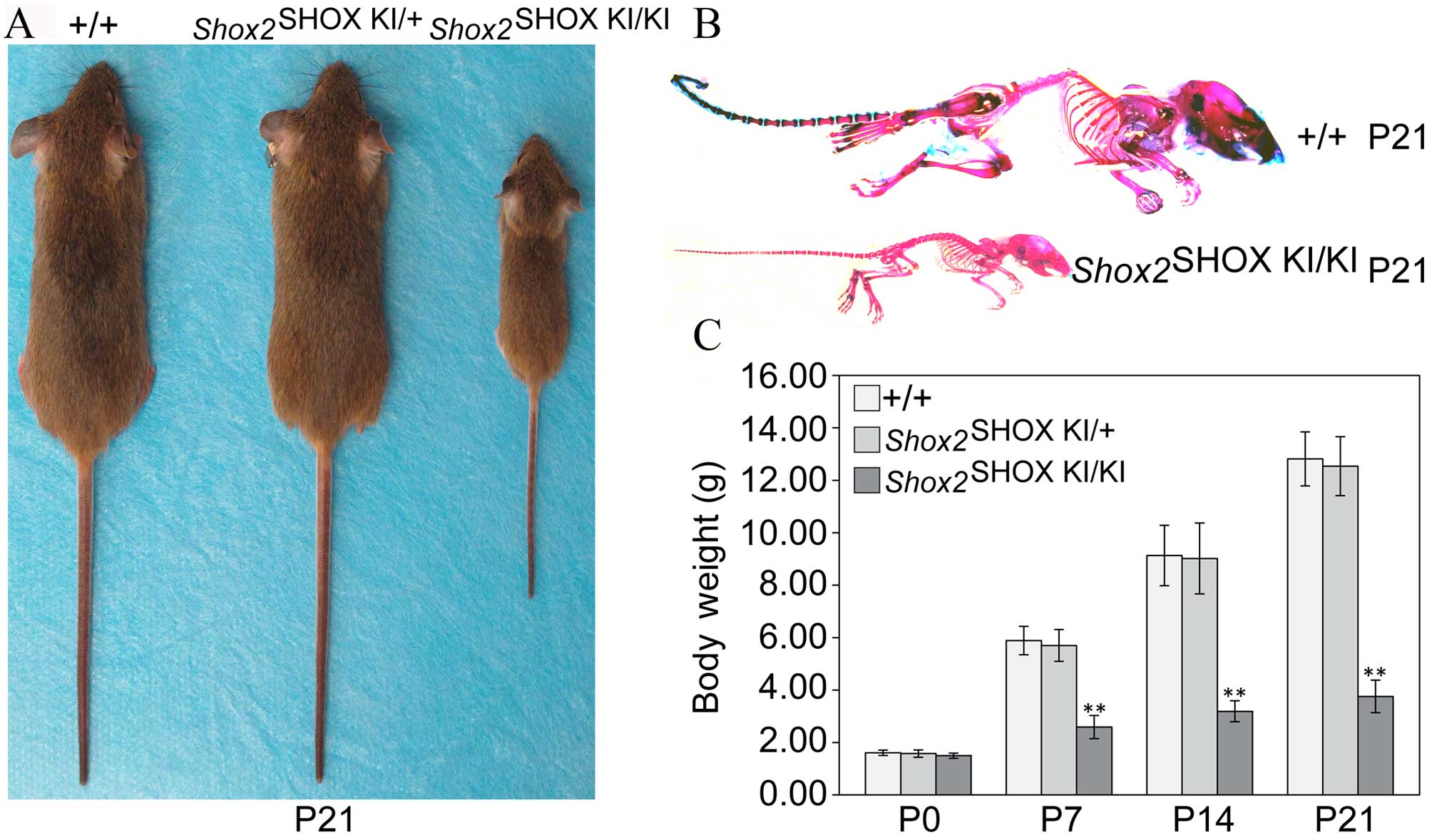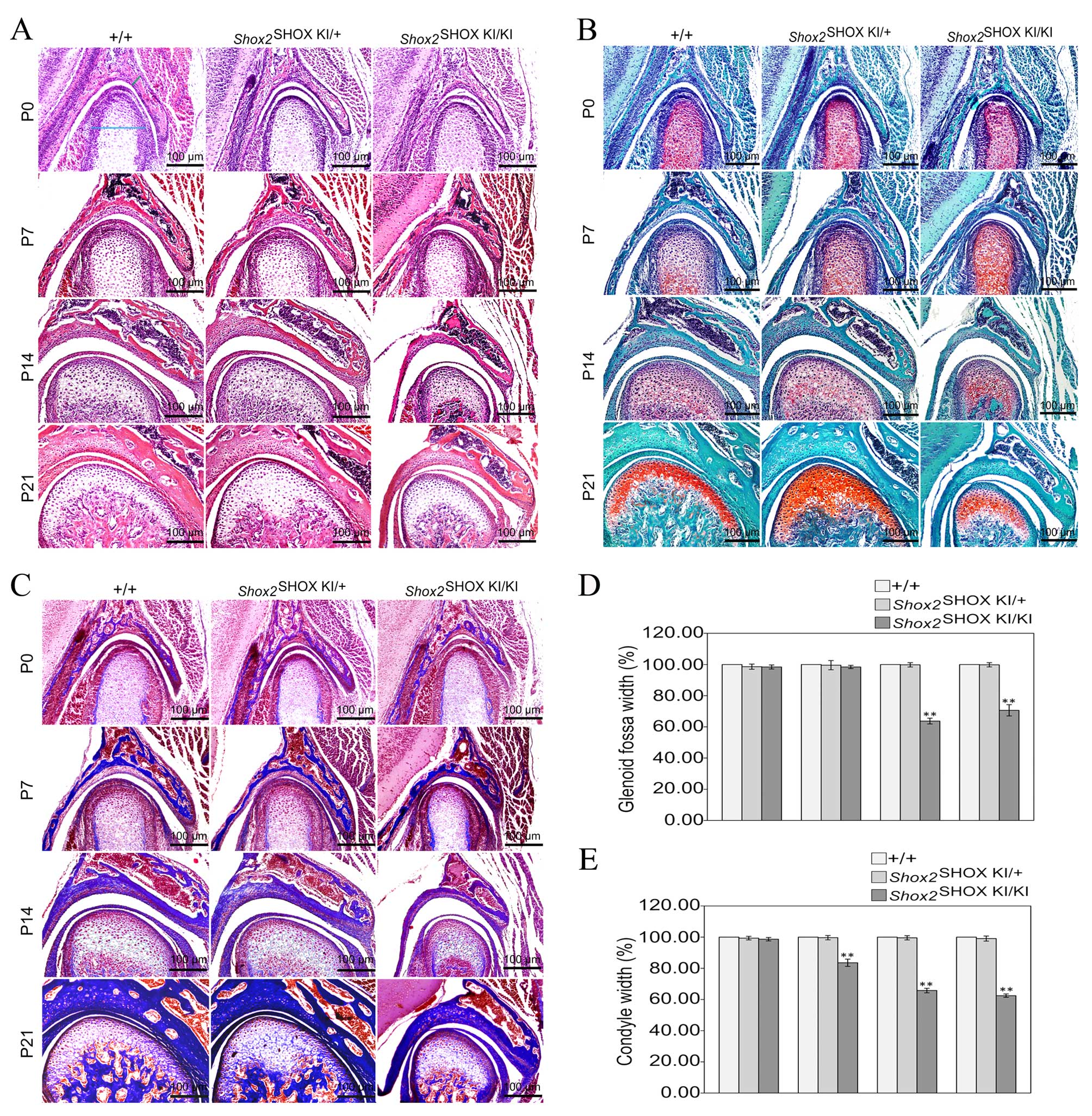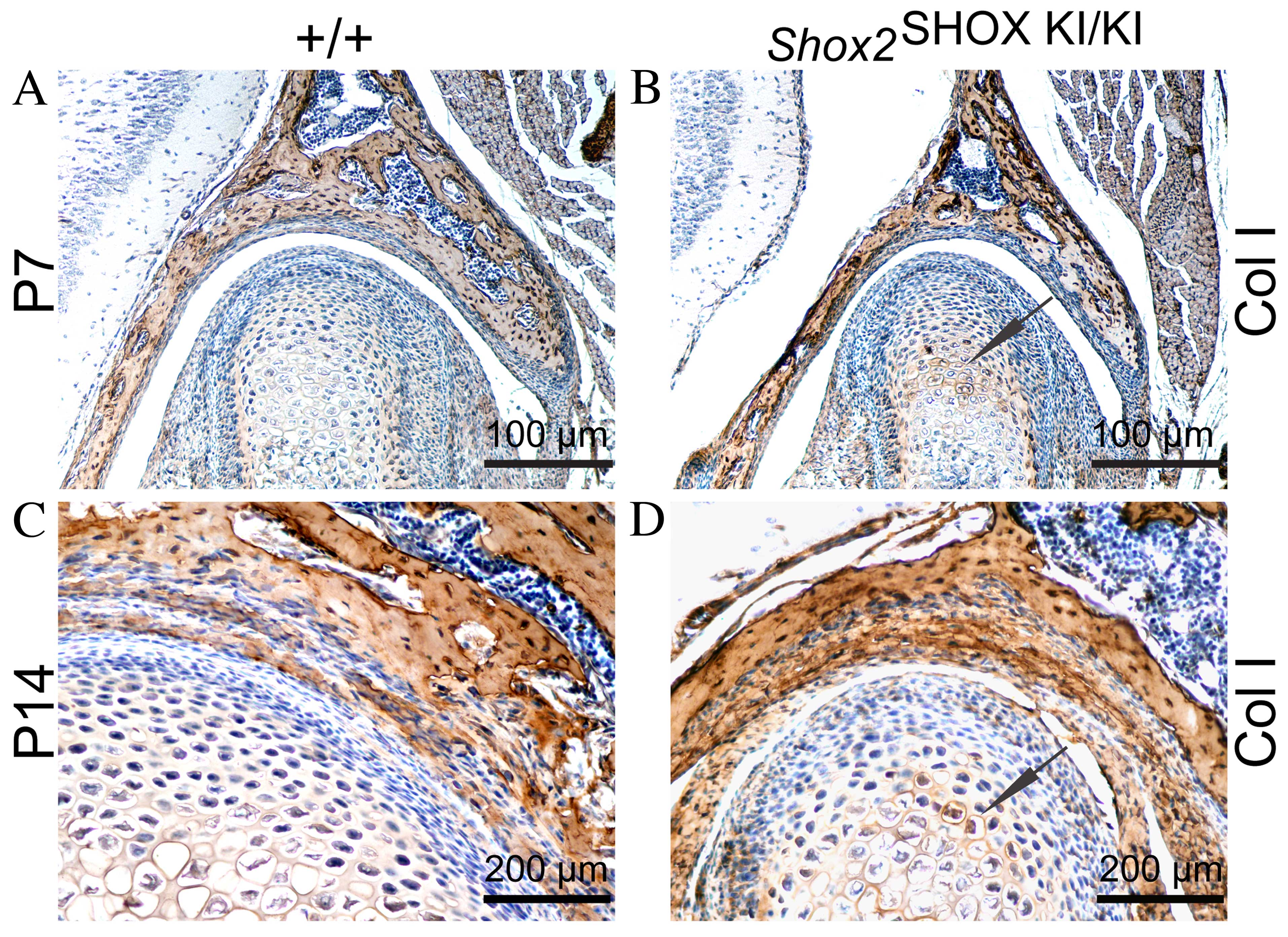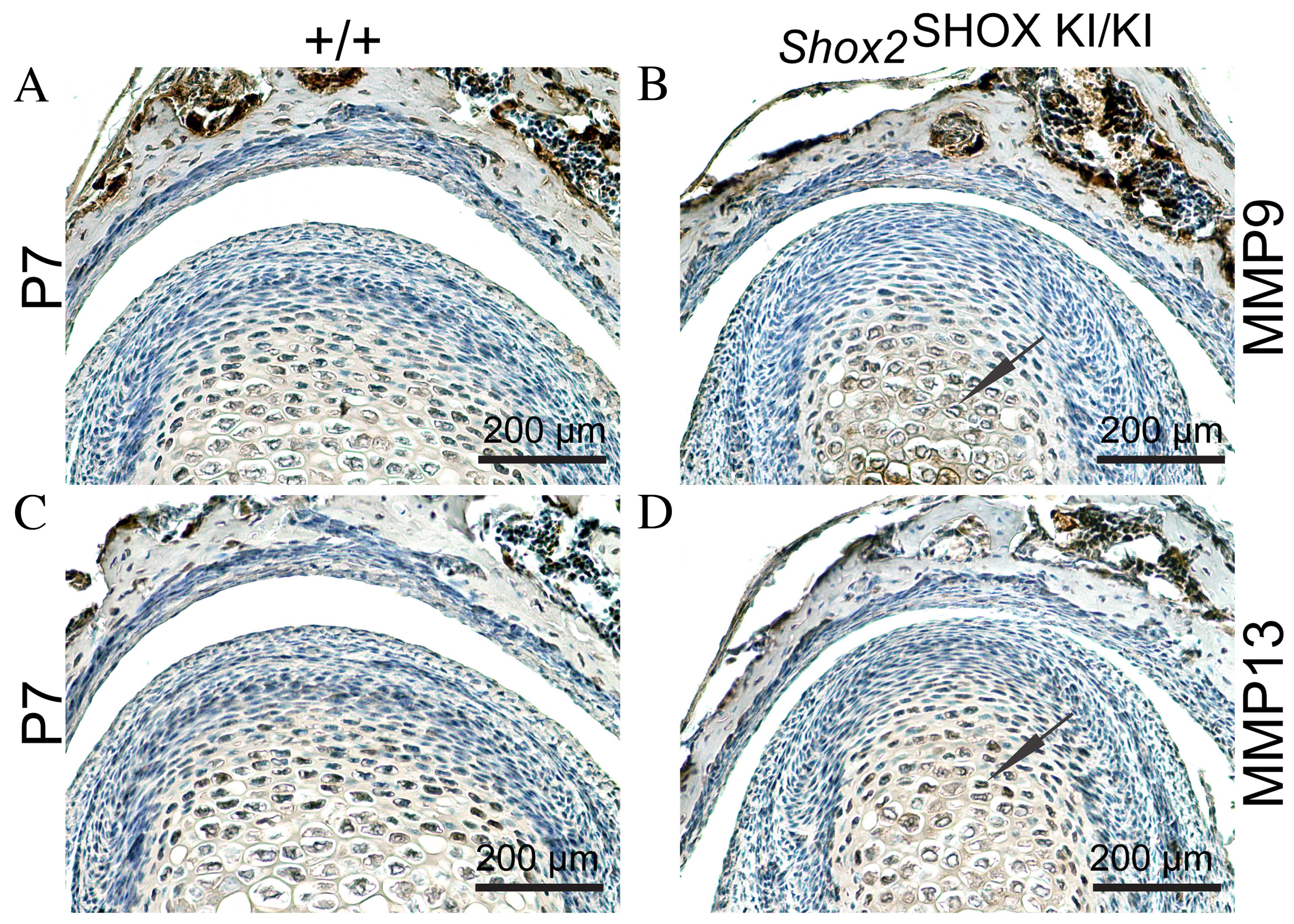|
1
|
Wang Y, Liu C, Rohr J, Liu H, He F, Yu J,
Sun C, Li L, Gu S and Chen Y: Tissue interaction is required for
glenoid fossa development during temporomandibular joint formation.
Dev Dyn. 240:2466–2473. 2011. View Article : Google Scholar : PubMed/NCBI
|
|
2
|
Li X, Liu H, Gu S, Liu C, Sun C, Zheng Y
and Chen Y: Replacing Shox2 with human SHOX leads to congenital
disc degeneration of the temporomandibular joint in mice. Cell
Tissue Res. 355:345–354. 2014. View Article : Google Scholar :
|
|
3
|
Wang XD, Zhang JN, Gan YH and Zhou YH:
Current understanding of pathogenesis and treatment of TMJ
osteoarthritis. J Dent Res. 94:666–673. 2015. View Article : Google Scholar : PubMed/NCBI
|
|
4
|
Embree MC, Iwaoka GM, Kong D, Martin BN,
Patel RK, Lee AH, Nathan JM, Eisig SB, Safarov A, Koslovsky DA, et
al: Soft tissue ossification and condylar cartilage degeneration
following TMJ disc perforation in a rabbit pilot study.
Osteoarthritis Cartilage. 23:629–639. 2015. View Article : Google Scholar : PubMed/NCBI
|
|
5
|
Li X, Liang W, Ye H, Weng X, Liu F and Liu
X: Overexpression of Shox2 leads to congenital dysplasia of the
temporomandibular joint in mice. Int J Mol Sci. 15:13135–13150.
2014. View Article : Google Scholar : PubMed/NCBI
|
|
6
|
Su SC, Tanimoto K, Tanne Y, Kunimatsu R,
Hirose N, Mitsuyoshi T, Okamoto Y and Tanne K: Celecoxib exerts
protective effects on extracellular matrix metabolism of mandibular
condylar chondrocytes under excessive mechanical stress.
Osteoarthritis Cartilage. 22:845–851. 2014. View Article : Google Scholar : PubMed/NCBI
|
|
7
|
Wilusz RE, Zauscher S and Guilak F:
Micromechanical mapping of early osteoarthritic changes in the
pericellular matrix of human articular cartilage. Osteoarthritis
Cartilage. 21:1895–1903. 2013. View Article : Google Scholar : PubMed/NCBI
|
|
8
|
Garnero P, Rousseau JC and Delmas PD:
Molecular basis and clinical use of biochemical markers of bone,
cartilage, and synovium in joint diseases. Arthritis Rheum.
43:953–968. 2000. View Article : Google Scholar : PubMed/NCBI
|
|
9
|
Polur I, Lee PL, Servais JM, Xu L and Li
Y: Role of HTRA1, a serine protease, in the progression of
articular cartilage degeneration. Histol Histopathol. 25:599–608.
2010.PubMed/NCBI
|
|
10
|
Hill A, Duran J and Purcell P: Lubricin
protects the temporomandibular joint surfaces from degeneration.
PLoS One. 9:e1064972014. View Article : Google Scholar : PubMed/NCBI
|
|
11
|
Asakawa-Tanne Y, Su S, Kunimatsu R, Hirose
N, Mitsuyoshi T, Okamoto Y, Tanaka E, Tanne K and Tanimoto K:
Effects of enzymatic degradation after loading in temporomandibular
joint. J Dent Res. 94:337–343. 2015. View Article : Google Scholar :
|
|
12
|
Gepstein A, Arbel G, Blumenfeld I, Peled M
and Livne E: Association of metalloproteinases, tissue inhibitors
of matrix metalloproteinases, and proteoglycans with development,
aging, and osteoarthritis processes in mouse temporomandibular
joint. Histochem Cell Biol. 120:23–32. 2003. View Article : Google Scholar : PubMed/NCBI
|
|
13
|
Xu L, Flahiff CM, Waldman BA, Wu D, Olsen
BR, Setton LA and Li Y: Osteoarthritis-like changes and decreased
mechanical function of articular cartilage in the joints of mice
with the chondrodysplasia gene (cho). Arthritis Rheum.
48:2509–2518. 2003. View Article : Google Scholar : PubMed/NCBI
|
|
14
|
Inada M, Wang Y, Byrne MH, Rahman MU,
Miyaura C, López-Otín C and Krane SM: Critical roles for
collagenase-3 (Mmp13) in development of growth plate cartilage and
in endochondral ossification. Proc Natl Acad Sci USA.
101:17192–17197. 2004. View Article : Google Scholar : PubMed/NCBI
|
|
15
|
Cobb J, Dierich A, Huss-Garcia Y and
Duboule D: A mouse model for human short-stature syndromes
identifies Shox2 as an upstream regulator of Runx2 during long-bone
development. Proc Natl Acad Sci USA. 103:4511–4515. 2006.
View Article : Google Scholar : PubMed/NCBI
|
|
16
|
Gu S, Wei N, Yu L, Fei J and Chen Y:
Shox2-deficiency leads to dysplasia and ankylosis of the
temporomandibular joint in mice. Mech Dev. 125:729–742. 2008.
View Article : Google Scholar : PubMed/NCBI
|
|
17
|
Liu H, Chen CH, Espinoza-Lewis RA, Jiao Z,
Sheu I, Hu X, Lin M, Zhang Y and Chen Y: Functional redundancy
between human SHOX and mouse Shox2 genes in the regulation of
sinoatrial node formation and pacemaking function. J Biol Chem.
286:17029–17038. 2011. View Article : Google Scholar : PubMed/NCBI
|
|
18
|
Liu YD, Liao LF, Zhang HY, Lu L, Jiao K,
Zhang M, Zhang J, He JJ, Wu YP, Chen D and Wang MQ: Reducing
dietary loading decreases mouse temporomandibular joint degradation
induced by anterior crossbite prosthesis. Osteoarthritis Cartilage.
22:302–312. 2014. View Article : Google Scholar :
|
|
19
|
Liang W, Li X, Gao B, Gan H, Lin X, Liao L
and Li C: Observing the development of the temporomandibular joint
in embryonic and post-natal mice using various staining methods.
Exp Ther Med. 11:481–489. 2016.PubMed/NCBI
|
|
20
|
Gu Z, Feng J, Shibata T, Hu J and Zhang Z:
Type II collagen and aggrecan mRNA expression by in situ
hybridization in rabbit temporomandibular joint posterior
attachment following disc displacement. Arch Oral Biol. 48:55–62.
2003. View Article : Google Scholar : PubMed/NCBI
|
|
21
|
Jackson MT, Moradi B, Smith MM, Jackson CJ
and Little CB: Activation of matrix metalloproteinases 2, 9, and 13
by activated protein C in human osteoarthritic cartilage
chondrocytes. Arthritis Rheumatol. 66:1525–1536. 2014. View Article : Google Scholar : PubMed/NCBI
|
|
22
|
Lindhorst E, Wachsmuth L, Kimmig N, Raiss
R, Aigner T, Atley L and Eyre D: Increase in degraded collagen type
II in synovial fluid early in the rabbit meniscectomy model of
osteoarthritis. Osteoarthritis Cartilage. 13:139–145. 2005.
View Article : Google Scholar : PubMed/NCBI
|
|
23
|
Megías J, Guillén MI, Bru A, Gomar F and
Alcaraz MJ: The carbon monoxide-releasing molecule
tricarbonyldichlororuthenium(II) dimer protects human
osteoarthritic chondrocytes and cartilage from the catabolic
actions of interleukin-1beta. J Pharmacol Exp Ther. 325:56–61.
2008. View Article : Google Scholar : PubMed/NCBI
|
|
24
|
Rogart JN, Barrach HJ and Chichester CO:
Articular collagen degradation in the Hulth-Telhag model of
osteoarthritis. Osteoarthritis Cartilage. 7:539–547. 1999.
View Article : Google Scholar : PubMed/NCBI
|
|
25
|
Miosge N, Hartmann M, Maelicke C and
Herken R: Expression of collagen type I and type II in consecutive
stages of human osteoarthritis. Histochem Cell Biol. 122:229–236.
2004. View Article : Google Scholar : PubMed/NCBI
|
|
26
|
Kim JH, Jeon J, Shin M, Won Y, Lee M, Kwak
JS, Lee G, Rhee J, Ryu JH, Chun CH and Chun JS: Regulation of the
catabolic cascade in osteoarthritis by the zinc-ZIP8-MTF1 axis.
Cell. 156:730–743. 2014. View Article : Google Scholar : PubMed/NCBI
|
|
27
|
Flannelly J, Chambers MG, Dudhia J, Hembry
RM, Murphy G, Mason RM and Bayliss MT: Metalloproteinase and tissue
inhibitor of metalloproteinase expression in the murine STR/ort
model of osteoarthritis. Osteoarthritis Cartilage. 10:722–733.
2002. View Article : Google Scholar : PubMed/NCBI
|
|
28
|
Purcell P, Joo BW, Hu JK, Tran PV,
Calicchio ML, O'Connell DJ, Maas RL and Tabin CJ: Temporomandibular
joint formation requires two distinct hedgehog-dependent steps.
Proc Natl Acad Sci USA. 106:18297–18302. 2009. View Article : Google Scholar : PubMed/NCBI
|
|
29
|
Ochiai T, Shibukawa Y, Nagayama M, Mundy
C, Yasuda T, Okabe T, Shimono K, Kanyama M, Hasegawa H, Maeda Y, et
al: Indian hedgehog roles in post-natal TMJ development and
organization. J Dent Res. 89:349–354. 2010. View Article : Google Scholar : PubMed/NCBI
|
|
30
|
Shibukawa Y, Young B, Wu C, Yamada S, Long
F, Pacifici M and Koyama E: Temporomandibular joint formation and
condyle growth require Indian hedgehog signaling. Dev Dyn.
236:426–434. 2007. View Article : Google Scholar
|


















